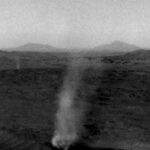The Hubble Space Telescope just imaged a massive bullseye in space: LEDA 1313424, or the Bullseye Galaxy, which is about 2.5 times the size of the Milky Way.
Despite the galaxy’s size, capturing this image proved no small feat. The Bullseye (affectionately) lies 567 million light-years from Earth, making it a rather distant object to capture in detail. But Hubble is a veteran at imaging galaxies, and the recent image reveals more rings around the Bullseye than previously known.
The Bullseye is now confirmed to have nine rings, eight of which are visible to Hubble. Researchers confirmed the existence of the ninth ring by studying data from the W. M. Keck Observatory. That means the Bullseye has six more rings than any other known galaxy.
Even more compelling than the sheer number of rings around the galaxy, though, is the way the Bullseye accrued them. Researchers believe that a tiny blue dwarf galaxy flew through the bullseye about 50 million years ago, producing the rings in the same way a rock thrown into a pond produces ripples.
“We’re catching the Bullseye at a very special moment in time,” said Pieter G. van Dokkum, an astronomer at Yale University and co-author of a study in The Astrophysical Journal Letters describing the galaxy, in a NASA release. “There’s a very narrow window after the impact when a galaxy like this would have so many rings.”
The galactic smashup caused gas, dust, and stars to move this way and that, producing a rare, concentric galactic structure. The blue dwarf galaxy wasn’t obliterated in the process though—in fact, it’s the blob visible directly to the Bullseye’s left in the above image. It’s also a strange twist on the bullseye analogy, as the bullseye didn’t exist until the blue galaxy crashed through it, triggering new stars to form. The galaxies are now about 130,000 light-years apart.
According to a Keck Observatory release, the research team suspects a tenth ring existed but has since faded, and may sit three times farther out than the widest ring in the above image.
“If we were to look down at the galaxy directly, the rings would look circular, with rings bunched up at the center and gradually becoming more spaced out the farther out they are,” said Imad Pasha, a doctoral student at Yale University and lead author of the study, in the NASA release.
So the Bullseye isn’t a perfect set of concentric circles. But it’s still a sight to behold, and a portal into the past galactic interactions of it and its nearest neighbor.
Read the full article here











